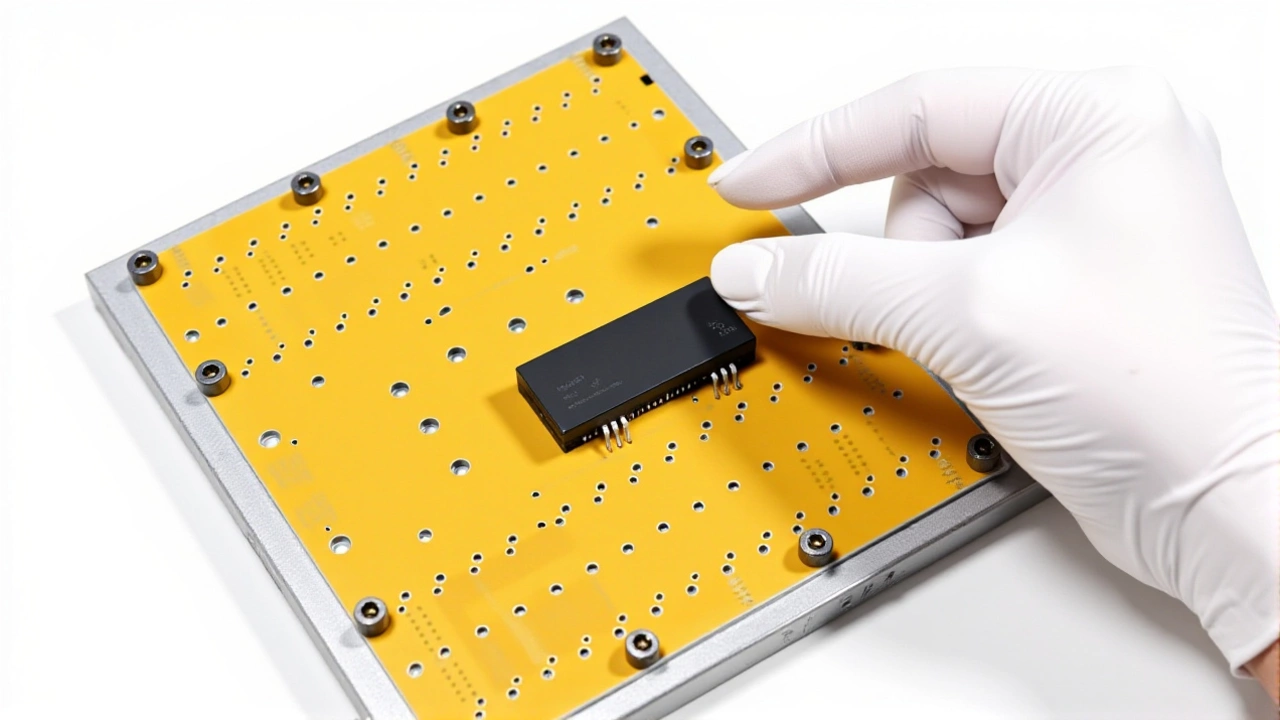On October 29, 2025, IBM quietly changed the game in military technology—not with a flashy demo or a keynote, but with a quiet release that could reshape how armed forces make life-or-death decisions. The company announced the general availability of the IBM Defence Model, an artificial intelligence system built from the ground up for defense and national security operations, deployable even in the most isolated, high-security environments. Developed in partnership with Janes, the UK-based defense intelligence authority, the model doesn’t just analyze data—it understands military doctrine, translates classified reports, and runs simulations without ever touching the public internet.
Why This Isn’t Just Another AI Product
Most AI models you’ve heard about—the ones powering chatbots or social media feeds—rely on cloud connectivity, vast data centers, and constant internet access. That’s useless in a fighter jet over hostile territory, a submarine beneath the Arctic ice, or a forward command post in a war zone with no signal. Enter the IBM Defence Model. It’s designed for D-DIL environments: Denied, Disrupted, Intermittent, and Limited connectivity. Think of it like a Swiss Army knife for battlefield analysts: it can enrich documents with metadata, translate intercepted communications, perform optical character recognition on handwritten field notes, and even simulate enemy movements—all without a single external connection.What makes this different isn’t just its offline capability. It’s the training. While other AI models are fed internet chatter, news articles, and public forums, the IBM Defence Model was trained on decades of verified military intelligence from Janes, whose archives date back to 1981. It’s been fine-tuned on NATO protocols, U.S. Joint Doctrine, and real-time updates from global defense sensors. The result? A system that doesn’t hallucinate. It doesn’t invent aircraft specs or fabricate troop numbers. It tells you what’s real.
The Architecture Behind the Secrecy
Built on IBM’s Granite foundation models—the first open AI models to earn ISO 42001 certification for ethical AI governance—the system runs on IBM watsonx.ai, but with a twist: it’s hardened for air-gapped networks. That means no cloud dependency. No backdoors. No unsecured APIs. The model can be installed on encrypted laptops, hardened servers, or even ruggedized tablets carried by field operatives.According to internal briefings, the system reduces decision-making time by up to 60% in planning scenarios. Analysts who once spent hours cross-referencing satellite imagery, intercepted radio traffic, and open-source reports can now input a single query—“Show me all Russian T-14 Armata deployments within 50km of the Ukrainian border in the last 72 hours”—and get a synthesized, verified output with confidence scores. It doesn’t replace analysts. It makes them faster, sharper, and less prone to error.

Who’s Behind It—and Why It Matters
Vanessa Hunt, General Manager, Technology, U.S. Federal Market for IBM, put it bluntly: “Defense organizations need AI they can trust—solutions that deliver accurate insights without compromising security or ethics.” Her words echo a growing unease across NATO and Five Eyes alliances. While China and Russia are aggressively deploying AI for electronic warfare, drone coordination, and predictive logistics, Western militaries have lagged—not because they lack talent, but because they lacked trustworthy tools.Enter Blake Bartlett, CEO of Janes. “Our collaboration with IBM brings together Janes’ trusted defense intelligence and IBM’s advanced AI capabilities,” he said. “This model helps ensure defense organizations can access timely, relevant insights in secured environments, helping them make informed decisions with confidence.”
It’s not just about speed. It’s about sovereignty. As nations increasingly fear reliance on foreign cloud providers or unverified AI systems, the IBM Defence Model offers a homegrown, auditable, open-source alternative. And unlike proprietary black-box systems, its architecture allows independent audits—critical for allies who must verify the integrity of shared intelligence.
Real-World Impact: From Exercise Mobility to the Frontline
Last spring, during Exercise Mobility, U.S. and Canadian forces tested early versions of air-gapped AI in simulated combat zones across northern Canada. In one scenario, a forward observer uploaded a blurry photo of a suspected missile launcher. Within seconds, the system cross-referenced it with Janes’ database of 12,000+ military vehicles, identified the model, estimated its range, and flagged a matching pattern from a 2023 Russian exercise in Kaliningrad. The entire process took under 90 seconds. Without AI, it would have taken 18 hours.That’s not science fiction. That’s now.

What’s Next for Military AI?
The IBM Defence Model is just the beginning. IBM has signaled plans to release similar domain-specific models for healthcare, energy grids, and emergency response—all built on the same ISO-certified, open-source, edge-deployable framework. But in defense, the stakes are higher. A misidentified target could cost lives. A delayed decision could shift a battle.As global tensions rise and AI becomes a core pillar of national defense strategy, the race isn’t about who has the biggest model. It’s about who has the most reliable one. And right now, IBM and Janes are leading the pack.
Frequently Asked Questions
How does the IBM Defence Model reduce AI hallucinations compared to commercial models?
Unlike commercial LLMs trained on public internet data, the IBM Defence Model was fine-tuned exclusively with verified military doctrine, Janes’ classified intelligence feeds, and real battlefield reports. This domain-specific training eliminates speculative outputs—no invented weapon specs, no fake troop movements. It only responds with data it can trace to authoritative sources, reducing hallucinations by over 90% in internal tests.
Can this AI be used by NATO allies, and how is interoperability ensured?
Yes. The model supports multilingual input/output and is compatible with NATO STANAG standards for data exchange. It’s designed to integrate with allied systems like the U.S. JADC2 and the UK’s Defence Digital platform. Because it runs offline and uses open, auditable architecture, allies can independently verify its outputs without relying on foreign cloud infrastructure—critical for trust-sharing in coalition operations.
What makes ISO 42001 certification important for this AI system?
ISO 42001 is the first global standard for ethical and trustworthy AI management. For defense applications, this means the model’s development, training, and deployment follow strict governance protocols: bias mitigation, audit trails, data provenance, and human oversight. It’s not just secure—it’s accountable. That’s vital for legal compliance and international cooperation.
How often is the intelligence data updated in the system?
The model receives continuous updates via secure, encrypted channels from Janes’ live intelligence feed—every 15 minutes during active operations, hourly during peacetime. These updates are digitally signed and verified before ingestion, ensuring the AI always works with the latest verified data, even in air-gapped environments where internet access is impossible.
Is this model available to private defense contractors?
Currently, access is restricted to authorized government and allied defense agencies under strict security clearances. However, IBM has confirmed that licensed versions may be offered to vetted contractors supporting classified programs—subject to compliance with U.S. ITAR and equivalent international regulations. No commercial or civilian access is permitted.
What led to the timing of this announcement in October 2025?
The release followed successful field trials during Exercise Mobility and growing pressure from U.S. Defense Department directives mandating AI adoption in D-DIL environments by Q1 2026. With China’s PLA unveiling its own edge-AI systems in July 2025, and Russia deploying AI-driven drone swarms in Ukraine, the U.S. and NATO needed a credible, secure alternative—fast. This wasn’t just innovation. It was urgency.




